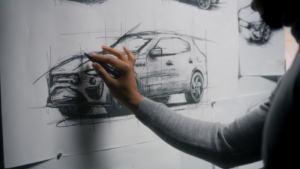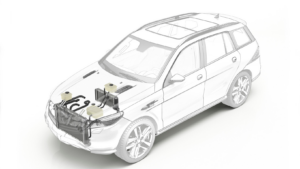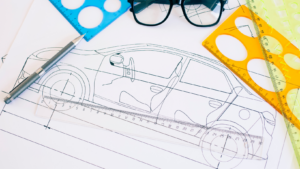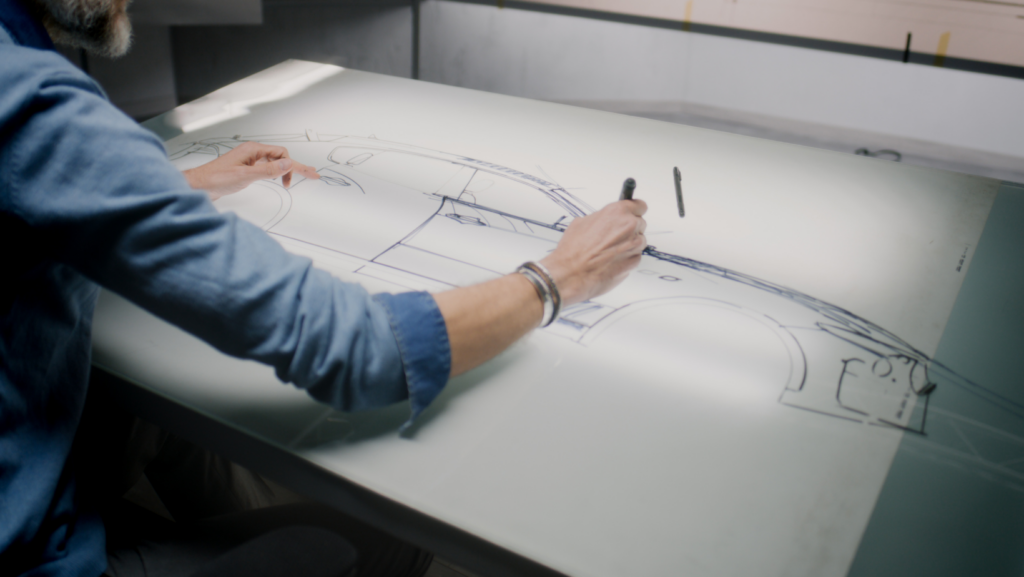From the dawn of human history, the urge to create has been a defining trait. It’s what sets us apart, and it’s what drives us forward. One of the purest forms of this creative drive is drawing. It’s a skill that’s as old as humanity itself, yet it’s also one that’s constantly evolving and adapting to new technologies and techniques.
One of the most popular subjects for artists across the ages has been the car. From the earliest horse-drawn carriages to the sleek, high-tech vehicles of today, cars provide an endless array of shapes, textures, a maximized space and challenges for artists to smartly explore.
So, whether you’re a seasoned artist looking to expand your repertoire, or a beginner just starting out, drawing cars can be a rewarding and fulfilling pursuit. Let’s delve into the art of capturing these mechanical marvels on paper with top DIY ideas.
Drawing:burmhcczepe= Car
 This section delves into how the art of drawing cars evolved, moving from traditional sketching methods to modern, digital design approaches. The discussion underscores technology’s role in shaping the present and future landscape of car illustrations.
This section delves into how the art of drawing cars evolved, moving from traditional sketching methods to modern, digital design approaches. The discussion underscores technology’s role in shaping the present and future landscape of car illustrations.
Traditional pen and paper were the early tools for sketching cars. Artists paid painstaking detail to the lines, shadows, and textures, echoing the diverse forms of vehicles through the ages. As times changed, so did the tools. By the 20th century, airbrushing became a popular method, providing smoother gradients and softer finishes. The digital age introduced software like Adobe Illustrator and Photoshop, opening new vistas in car illustration. Artists gained the ability to undo errors, tweak designs easily, and experiment with elements in non-destructive ways. Thus, the transition from sketching to digital design enhanced creativity while smoothing the creative process.
The Influence of Technology on Car Illustrations
 Technology has made a bold mark on the art of car illustration. New tools and software have elevated the flexibility and precision of the craft. In the realm of 3D modeling, programs like AutoCAD and Blender allow for realistic, three-dimensional representations of cars. Virtual Reality (VR) technology even allows artists to immerse themselves in the design, creating and modifying the model in real-time. Moreover, Artificial Intelligence (AI) tools hint at the future of car illustration, showcasing advanced features like automatic color grading and smart design suggestions. Therefore, technology constitutes an essential factor in the evolution and future trajectory of car illustration.
Technology has made a bold mark on the art of car illustration. New tools and software have elevated the flexibility and precision of the craft. In the realm of 3D modeling, programs like AutoCAD and Blender allow for realistic, three-dimensional representations of cars. Virtual Reality (VR) technology even allows artists to immerse themselves in the design, creating and modifying the model in real-time. Moreover, Artificial Intelligence (AI) tools hint at the future of car illustration, showcasing advanced features like automatic color grading and smart design suggestions. Therefore, technology constitutes an essential factor in the evolution and future trajectory of car illustration.
Essential Tools for Drawing Cars
Diving deeper into the artistry of car illustration, it’s key to consider the essential tools involved in this craft. Those invaluable aids help artists, from beginners to professionals, translate their creative vision into tangible artistry.
Traditional Drawing Tools
When drawing by hand, artists require a variety of instruments. Pencils, ranging from hard H pencils for fine lines to soft B pencils for richly dark strokes, serve as the backbone of sketching. Erasers, both large for broad correction and small for detail work, equip the illustrator with control over their creation. Sketchpads, offering a smooth surface free of texture interference, become the canvas on which the illustration takes shape. Compasses, rulers, and French curves, by granting precision in creating symmetrical and fluid lines, assist in drafting the car’s bodywork. These elements come together, shaping the foundation of traditional car drawing.
Digital Drawing Tools and Software
 Venturing into the digital realm, software has revolutionised car illustration. Adobe Photoshop, favoured for its spectrum of brushes and layers, augments the detailing process. Adobe Illustrator, valued for its vector-based art creation, provides scale-independent illustrations suitable for resizing. For three-dimensional work, 3D modeling software like AutoCAD and Blender excel, simulating real-world lighting conditions and materials. VR technology, emerging as an interactive drawing platform, allows artists to design in a three-dimensional virtual space. AI tools, promoting large-scale customization with algorithms, increase the efficiency of the digital design process. All these digital assets empower the artists to push the boundaries of what’s conceivable in car illustration.
Venturing into the digital realm, software has revolutionised car illustration. Adobe Photoshop, favoured for its spectrum of brushes and layers, augments the detailing process. Adobe Illustrator, valued for its vector-based art creation, provides scale-independent illustrations suitable for resizing. For three-dimensional work, 3D modeling software like AutoCAD and Blender excel, simulating real-world lighting conditions and materials. VR technology, emerging as an interactive drawing platform, allows artists to design in a three-dimensional virtual space. AI tools, promoting large-scale customization with algorithms, increase the efficiency of the digital design process. All these digital assets empower the artists to push the boundaries of what’s conceivable in car illustration.

